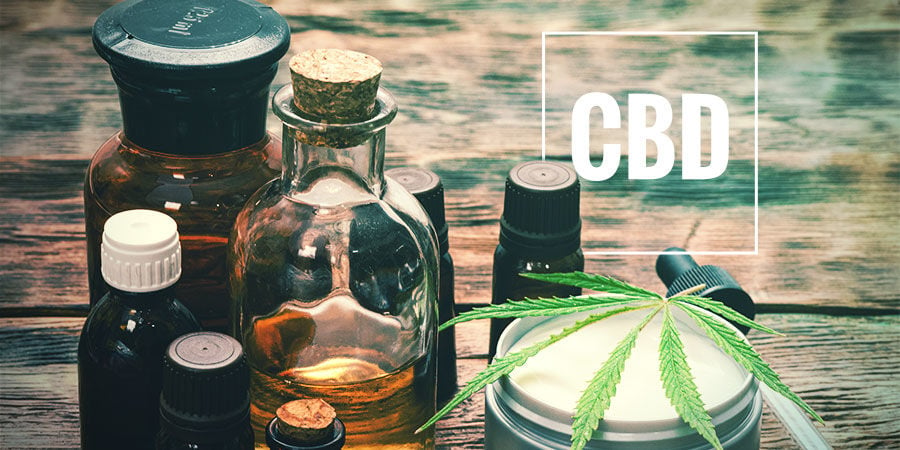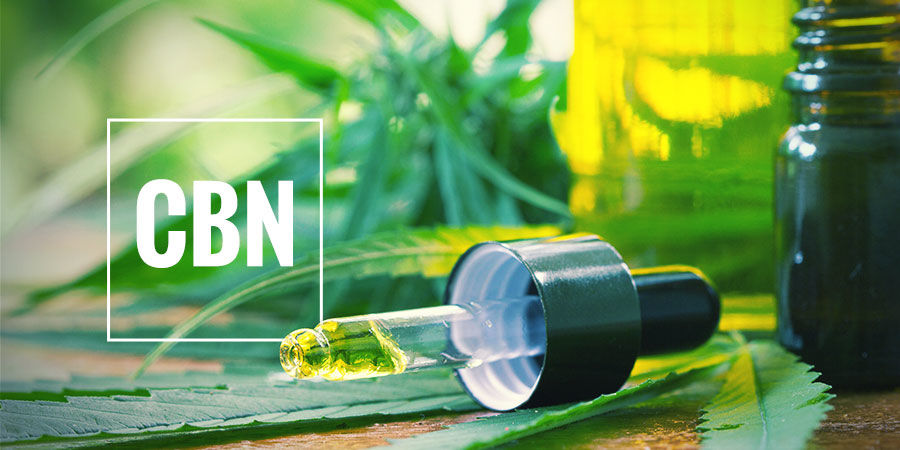
CBD Vs CBN: What's The Difference?
As one of over 100 cannabinoids within the cannabis plant, CBN offers interesting effects. But science still has much to learn about the molecule. It shares some striking similarities with CBD, yet also possesses some of its own unique effects. Find out more about this cannabinoid, how it's formed, and what new CBN products to look out for.
You may have seen CBN products entering the cannabis market. Although known about for quite some time, companies are finally embracing CBN, developing unique products around this interesting molecule.
Cannabis science has come a long way. Researchers in the field have pushed the boundaries over the past century and uncovered many of the phytochemicals that make cannabis effective and unique. Scientists have identified over 100 cannabinoids in the plant so far, though our understanding of these chemicals still remains quite shallow.
All cannabis enthusiasts have heard of THC, which underpins the psychoactive effects of the herb. The majority are also familiar with CBD, a non-psychoactive yet soothing component of the plant. But what about CBN? This fascinating chemical stems from THC, yet, much like CBD, it doesn’t produce a high. Thanks to the latter trait, companies are honing in on CBN as another cannabinoid set to enter the mainstream. It appears to be a perfect candidate to target the endocannabinoid system via tinctures, capsules, and edibles—much like CBD.
Below, we’ll take a deep dive into how CBN weighs up against CBD, discover where both of these cannabinoids come from, and compare their effects.
What Is CBD?
CBD, or cannabidiol, has taken centre stage in the cannabis world in recent years. As a non-psychoactive cannabinoid, many users take CBD throughout the day for its clear-headed and relaxing effects.
Until recently, most cannabis strains contained relatively low levels of CBD. However, advances in cannabis science have unveiled the versatile potential of the cannabinoid. Following a series of groundbreaking discoveries and famous anecdotes, cannabis breeders began developing cultivars with higher and higher levels of CBD.
Today, cannabis strains exist with astronomical levels of the cannabinoid, alongside almost no THC at all. These varieties produce no psychoactive effects while offering clarity and peace of mind. Other strains feature equal parts of both CBD and THC, offering the best of both worlds.
CBD has risen from a relatively unknown molecule to a widespread cannabinoid. Thanks to its lack of psychoactive effects, CBD now features in a broad array of everyday products, including:
Currently, CBD dominates the functional foods market and leads the charge in cannabinoid-fortified foods. The molecule has helped unleash the potential of cannabis as a base for a range of products designed to target the endocannabinoid system.
Where Does CBD Come From?
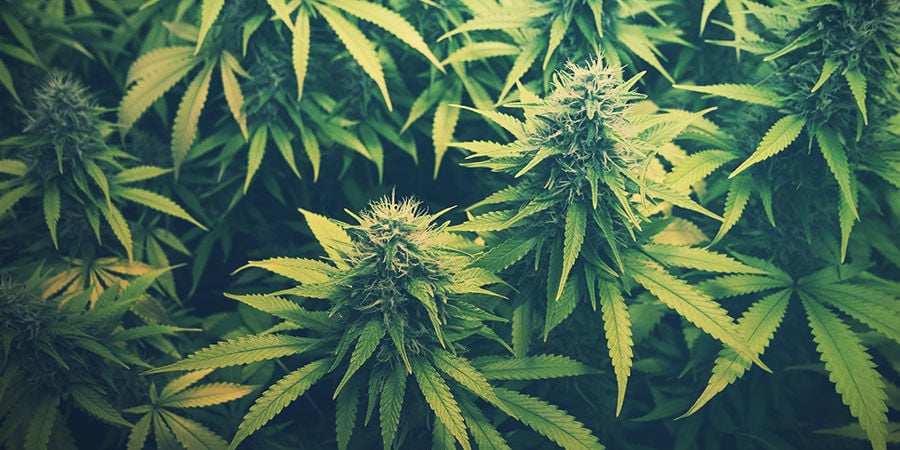
CBD occurs in a variety of cannabis cultivars, from high-CBD selectively bred strains to industrial hemp. Although the cannabinoid appears in the leaves and stems in small quantities, the flowers possess the highest concentrations.
You’ve probably noticed small crystalline structures on cannabis buds while rolling joints and packing bowls. These mushroom-shaped glands are known as trichomes, and they are tasked with churning out an array of phytochemicals, including CBD.
The majority of cannabinoids go through a process called biosynthesis, which occurs in the head—or cuticle—of the trichome. In the case of CBD, the molecule starts off life as two precursor molecules called olivetolic acid and geranyl pyrophosphate. An enzymatic reaction converts these chemicals into CBGA (cannabigerolic acid), the so-called “mother cannabinoid”.
CBGA serves as the precursor to several major cannabinoids; it all depends on which enzyme acts on the molecule. When the enzyme CBDA synthase catalyses the reaction, CBDA (cannabidiolic acid) emerges. CBD exists as the cannabinoid acid CBDA in the raw cannabis plant, and only converts to CBD when exposed to sufficient heat or light in a process called decarboxylation. After this conversion, technicians are able to extract CBD from cannabis flowers using a variety of methods.
At Zamnesia, we opt for supercritical CO₂ extraction. This method targets CBD and various aromatic terpenes while leaving everything else behind, eliminating the risk of residue in the end product.
The Effects of CBD
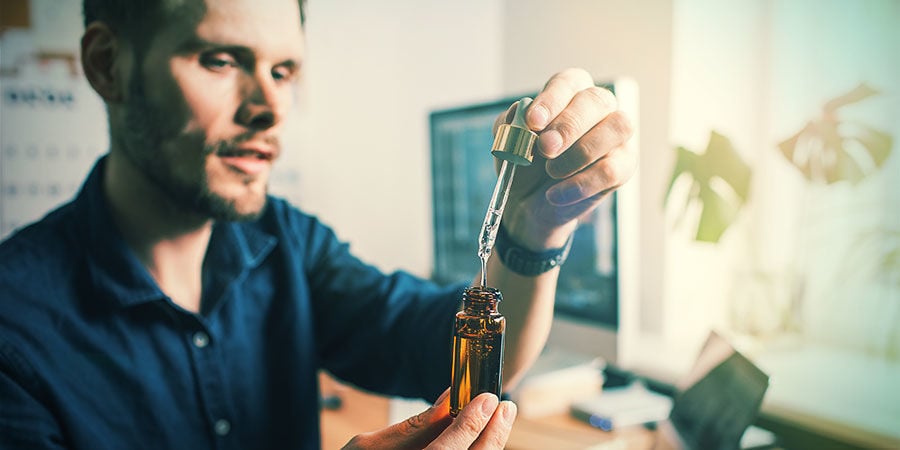
As a non-psychoactive cannabinoid, CBD doesn’t produce a high like THC. Instead, the effects are much more subtle. Most users find the cannabinoid offers a clear-headed effect. It relaxes the mind and soothes the body while enabling the user to remain entirely functional and productive throughout the day.
CBD targets several receptors throughout the body to produce its effects. These include:
- CB1 and CB2 receptors of the endocannabinoid system
- Serotonin receptors
- TRPV1 receptors
The cannabinoid also increases levels of the endocannabinoid anandamide—the bliss molecule. This chemical—also found in dark chocolate and truffles—helps to raise the spirits and elevate the mood.
Many athletes also praise CBD for its ability to soothe the muscles after a heavy workout, a long run, or an intense match. Whether massaged into the skin as a topical preparation or used to make a warm bath, CBD can help you recover after physically challenging activities.
Cannabidiol also comes in handy before settling down to sleep. The cannabinoid helps to promote sleep readiness and offers an overall beneficial effect on sleep function. Use CBD for a restorative night’s sleep and wake up feeling refreshed.
CBD also assists when feeling nervous or agitated. A few drops before a meeting or presentation can help to soothe the nerves, increase confidence, and create a grounded and centred state of being.
What Is CBN?
CBN, or cannabinol, was the first cannabinoid to be isolated from the cannabis plant. Very mildly psychoactive, the chemical does not produce intoxicating effects or a high, instead producing a subtle soothing effect. Although researchers have known about CBN for quite some time, the molecule has only just burst onto the scene.
CBN seems likely to follow in CBD’s footsteps, appearing in products that enable users to support their endocannabinoid system without getting stoned in the process. Just like CBD, CBN offers a non-intoxicating, clear-headed effect ideal for any time of day.
As the cannabis industry continues to embrace CBN, more products are starting to enter the market. These include:
- Oils
- Crystals
- Tinctures
- Topicals
How Is CBN Formed?
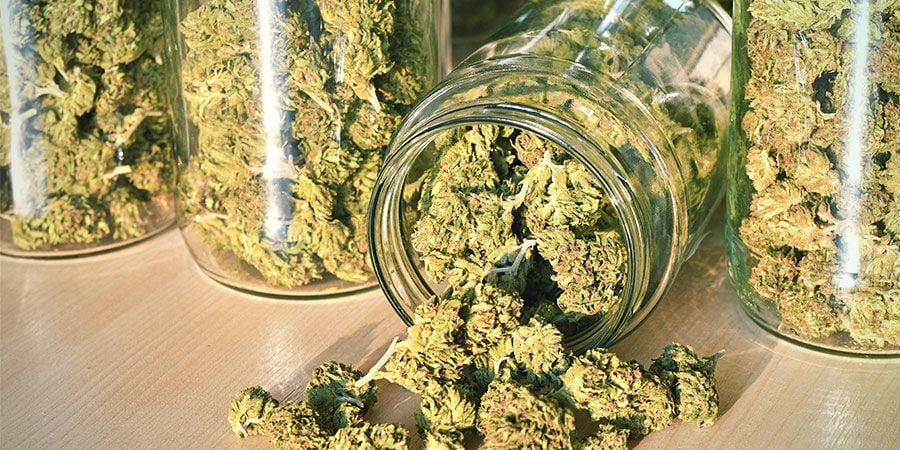
CBN differs from most major cannabinoids in that it doesn’t go through an enzymatic reaction. Rather, CBN occurs through the degradation of the strong psychoactive component of cannabis: THC. When THC becomes exposed to oxygen, light, or heat, it gradually breaks down and converts to CBN.
Most cannabis smokers have likely inhaled CBN without even being aware of it. When buds are stored incorrectly or kept for too long, the THC content begins to switch over to CBN. The fact that researchers discovered CBN before THC can likely be chalked up to poor quality control and transportation methods of the material, resulting in degradation.
CO₂ extraction also works to pull CBN from cannabis flowers using specific temperature and pressure settings.
The Effects of CBN

Research regarding the effects of CBN is in its infancy, despite it being the first cannabinoid isolated from cannabis. A distinct lack of clinical trials means most of the functions of this interesting cannabinoid remain unveiled. However, we do know that CBN:
- Produces no psychotropic/intoxicating effects
- Is an agonist of both CB1 and CB2 receptors of the endocannabinoid system
CBN may also help relax the muscles and melt away tension. The soothing properties of the molecule suggest it could work alongside CBD to enhance recovery after the gym. The cannabinoid may also help to reduce skin redness through mechanisms that don’t involve the endocannabinoid system.
CBN also appears to encourage mental relaxation. It might provide a better option in isolation than CBD in terms of sufficiently winding down. Light up your endocannabinoid system with this molecule to dive deeper into meditation and add some serious chill to smoking sessions.
How CBN Compares to CBD

Although CBD and CBN have quite a bit in common, they also vary in several ways. Let’s explore their similarities and differences:
Traits shared between CBD and CBN:
- Help to promote a good night’s sleep
- Soothe and relax the body
- Target cannabinoid receptors
- Ease mental tension
- Non-psychotropic
Traits unique to CBD:
- CBDA forms within living plants via enzymatic reactions, decarboxylates to CBD with heat or light exposure
- More studied and better understood
- Increases the body’s levels of endocannabinoids
- Supports mental alertness
Traits unique to CBN:
- Formed in harvested cannabis flowers via degradation of THC
- More relaxing than alerting
- Far less studied
Is There Synergy Between CBD and CBN?
CBD and CBN may work together to enhance each other's effects. The entourage effect explains (Russo, 2011) how different phytochemicals found in cannabis—cannabinoids, terpenes, and flavonoids—synergise to create more effective outcomes.
Cannabinoids such as CBD and THC are known to work alongside terpenes including myrcene, limonene, and pinene to produce more pronounced effects. No specific studies have examined how CBD and CBN work in tandem. However, their similar effects make it likely that they could complement each other’s beneficial actions.
Availability of CBN products on the market
As the promising world of cannabinoids is further unveiled, CBN is sure to join CBD as a prominent feature on the global marketplace. Only time will reveal the full extent of their relationship, but both compounds are poised to appear in an ever-growing range of products.
- Russo, & E. B. (2011). Taming THC: potential cannabis synergy and phytocannabinoid-terpenoid entourage effects. British Journal of Pharmacology, 163(7), 1344–1364. - https://www.ncbi.nlm.nih.gov
-
 4 min
8 August 2021
Top 5 Zamnesia CBD Products
Shopping for CBD can be a confusing experience. There are so many products and brands out there. At Zamnesia, we provide a high-quality CBD line featuring numerous easy-to-use products.
4 min
8 August 2021
Top 5 Zamnesia CBD Products
Shopping for CBD can be a confusing experience. There are so many products and brands out there. At Zamnesia, we provide a high-quality CBD line featuring numerous easy-to-use products.
-
 4 min
6 August 2021
How To Use CBD: Which CBD Product Is Right For You?
CBD is becoming an increasingly popular dietary supplement, yet for the unfamiliar, knowing the most suitable way to take CBD can be a challenge.
4 min
6 August 2021
How To Use CBD: Which CBD Product Is Right For You?
CBD is becoming an increasingly popular dietary supplement, yet for the unfamiliar, knowing the most suitable way to take CBD can be a challenge.
-
 5 min
8 March 2021
Best CBD Strains To Grow At Home In 2026
Explore this range of top-tier CBD strains, each of which offers high levels of the non-psychotropic cannabinoid. You'll also get a taste for some of the tastiest terpene profiles available....
5 min
8 March 2021
Best CBD Strains To Grow At Home In 2026
Explore this range of top-tier CBD strains, each of which offers high levels of the non-psychotropic cannabinoid. You'll also get a taste for some of the tastiest terpene profiles available....
-
 3 min
6 September 2020
What Is CBG Oil?
With so many oils and supplements available on the market today, it can be a tricky task to know which one to go for. We've put together this handy guide that will break down everything you need to...
3 min
6 September 2020
What Is CBG Oil?
With so many oils and supplements available on the market today, it can be a tricky task to know which one to go for. We've put together this handy guide that will break down everything you need to...
-
 2 min
1 September 2020
What Is CBG And How Does It Compare To CBD?
Science is beginning to unveil the potential of many formerly untapped cannabinoids. CBG is one of them. How does this up-and-coming chemical compare to CBD?
2 min
1 September 2020
What Is CBG And How Does It Compare To CBD?
Science is beginning to unveil the potential of many formerly untapped cannabinoids. CBG is one of them. How does this up-and-coming chemical compare to CBD?
-
 4 min
30 August 2020
What Is CBN Oil?
CBN oil has become a popular choice in recent years, with many users taking it daily alongside vitamins and other supplements to aid well-being. Our CBN oil is packed full of non-psychoactive...
4 min
30 August 2020
What Is CBN Oil?
CBN oil has become a popular choice in recent years, with many users taking it daily alongside vitamins and other supplements to aid well-being. Our CBN oil is packed full of non-psychoactive...





 United States
United States

